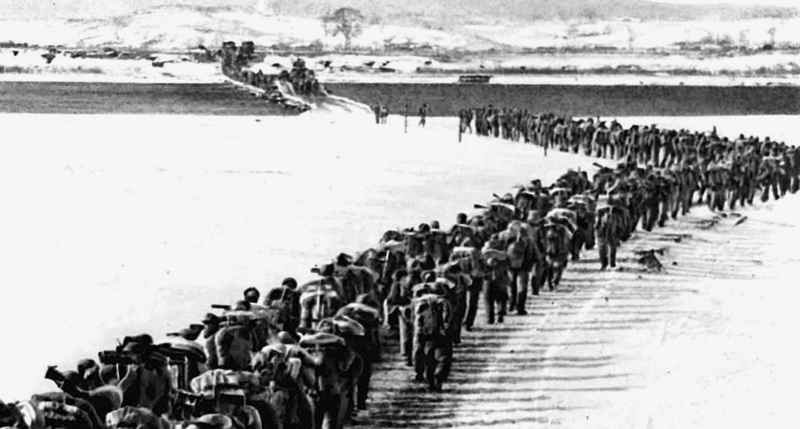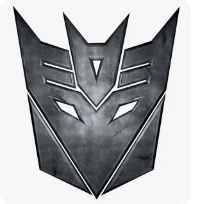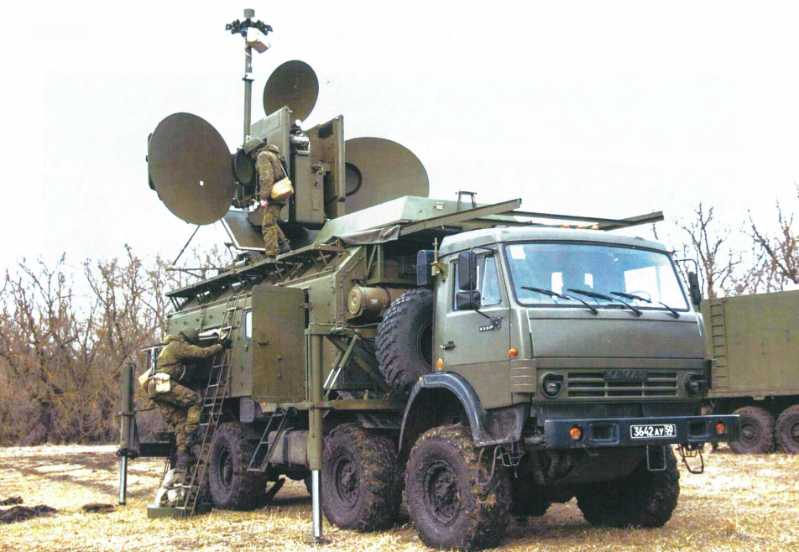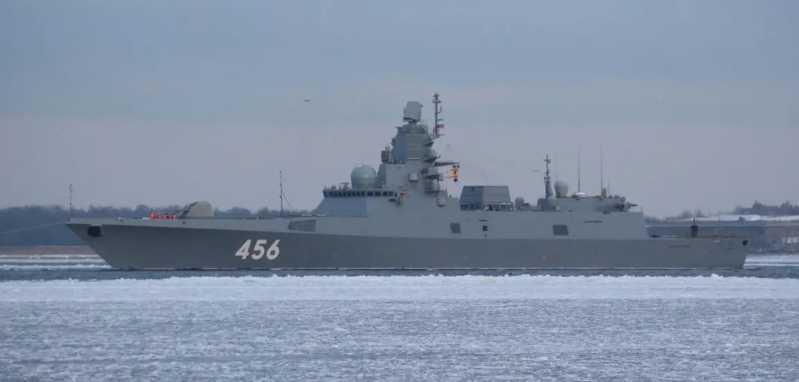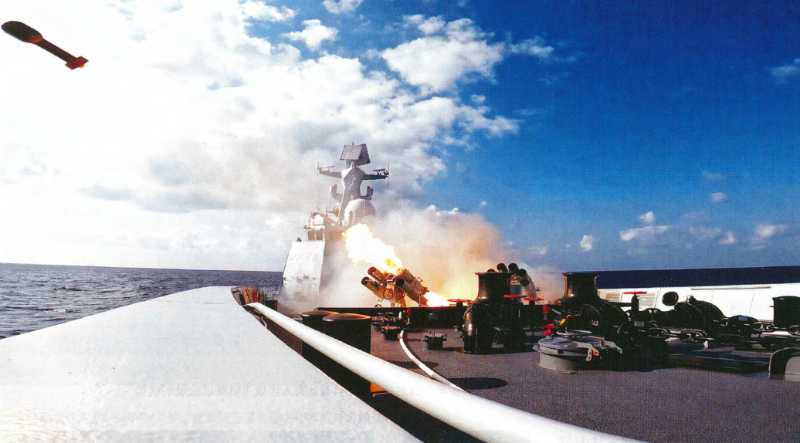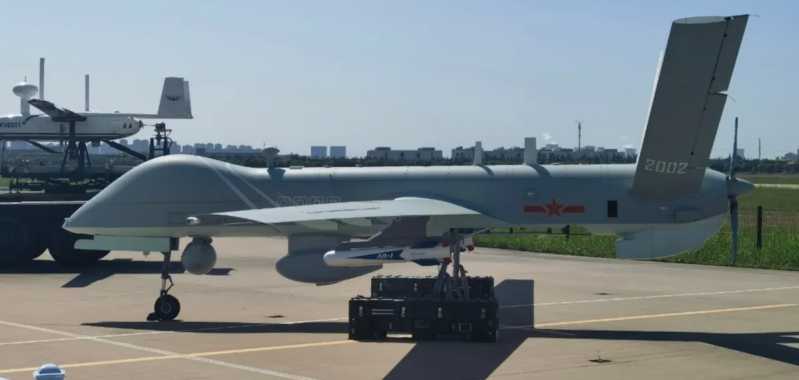The Korean War was a war of unprecedented scale. China invested a total of 780,000 troops, North Korea invested a total of 260,000 troops, and the Soviet Union invested a total of 26,000 troops (mainly pilots). The United States invested 480,000 troops in the navy, army and air force during the Korean War. South Korea invested 590,911 troops. The total number of troops of the other 15 countries of the United Nations was 134,694. More than 2 million troops from both sides fought a life-and-death duel on this small peninsula.
The impact of this war on the world continues to this day, and the most direct impact is that the newly born China has withstood this severe test.
This book interprets the Korean War from the Chinese perspective, from the origin of the war, to China’s difficult decision to join the war, to China’s successful ceasefire through huge sacrifices, leading readers to relive the struggle between the United States and China over this small peninsula 70 years ago.
Chapter 1 The Origin of the War to Resist U.S. Aggression and Aid Korea (Part 1): Undercurrents
1949 was the most extraordinary year in East Asia in the past 100 years.
In this year, the ancient Eastern dragon awakened.
On October 1, 1949, the People’s Republic of China was founded. After a century of suffering, China, an ancient civilization, finally took the first step towards its great rejuvenation.
However, in the year when all Chinese people celebrated the victory, an unknown huge storm had already surged on the Korean Peninsula, which was separated from China by a river.
Soon, this storm will sweep across the Korean Peninsula, affecting the fate of the entire Asia, and eventually shocking the whole world.
1. Young Leader
In early 1949, Kim Il-sung, the young leader of North Korea, was in extremely complicated emotions.
Suddenly reaching the peak of his life, he could not suppress his immense excitement, nor could he suppress his anxiety and worry about the future.
What made him excited and anxious was the same thing: at the end of 1948, the Soviet Union withdrew its troops from North Korea.
The withdrawal of the Soviet army meant that the Soviet Union would no longer intervene in and manipulate the daily affairs of North Korea, which meant that Kim Il-sung, the chairman of the Workers’ Party of Korea at the age of 37, was no longer a puppet of the Soviet Union, but became the actual controller of North Korea.
Kim Il-sung later wrote an autobiography for his first half of life, titled "Kim Il-sung Memoirs: Walking with the Century"; I personally think that the title can be changed to "Kim Il-sung: My Lucky First Half of Life".
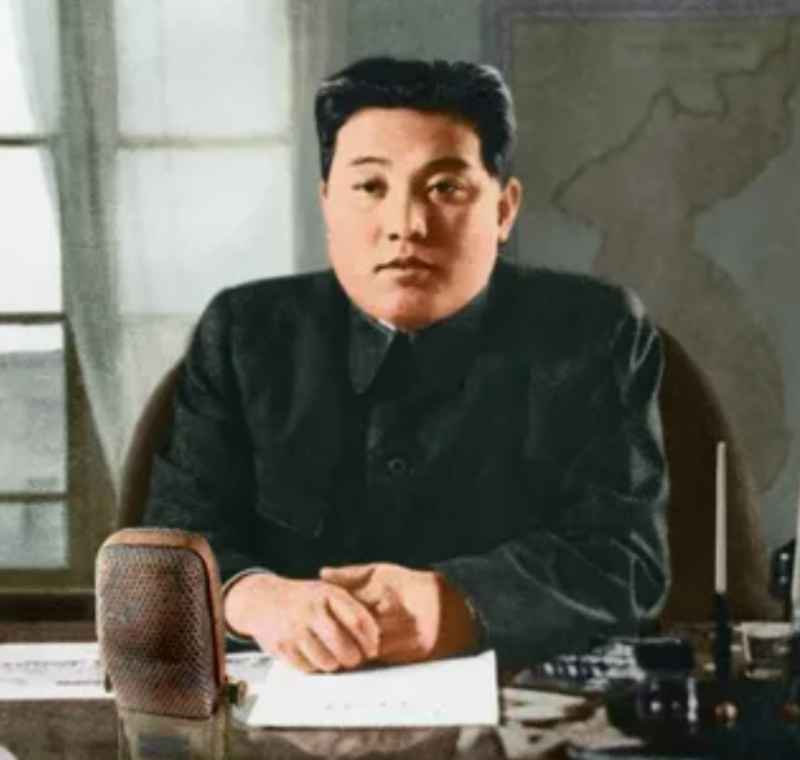
Kim Il-sung was born in an ordinary peasant family in North Korea in 1912. When he was young, in order to escape Japan’s persecution of Korean anti-Japanese activists, Kim Il-sung fled to Northeast China with his father.
In 1931, Kim Il-sung joined the Communist Party of China and then joined the Northeast Anti-Japanese Allied Forces led by the Communist Party of China.
In 1940, Japan increased its military investment in the Northeast region, and the Northeast Anti-Japanese Allied Forces could no longer persist. Kim Il-sung followed the Northeast Anti-Japanese Allied Forces and retreated to the Soviet Union. The Soviet Union incorporated this unit into the Soviet Army and reorganized it into the 88th Independent Infantry Brigade of the Far Eastern Front. Kim Il-sung served as the commander of the 1st Battalion and was awarded the rank of captain of the Soviet Army.
In August 1945, the Soviet Union launched a full-scale war against the Japanese army in Asia. In a very short period of time, 1.5 million Soviet troops swept across the entire Northeast China and northern North Korea.
Shortly after the Soviet army liberated North Korea, Kim Il-sung, the commander of the 1st Battalion of the 88th Brigade, who was still stationed in the Soviet Union, welcomed a guest who might be an important guest in his life: Georgy Mekler, the director of the 7th Department of the Political Department of the First Far Eastern Front.
Mekler had a long talk with Kim Il-sung and watched a training class led by Kim Il-sung before leaving.
Kim Il-sung felt that Mekler had come to inspect him specially, and he was very happy. Maybe the Soviets were going to promote him?
Until this moment, Kim Il-sung’s life was still on a steady road. As the battalion commander of the "Korean Battalion" of the 1st Battalion of the 88th Brigade, he worked seriously and had strict requirements for his subordinates, which won unanimous praise from the commanders of the troops. As the highest-ranking military officer among all Koreans, Kim Il-sung became the center of all Koreans in the 88th Brigade.
Kim Il-sung certainly thought that after the Soviet Union helped the Koreans drive away the Japanese invaders, as the leader of this small group of Koreans in the Soviet army, as long as he worked hard, perhaps the Soviets would help him arrange a prominent position in the future North Korean government.
However, the reality is far more magical than imagined.
At this time, Kim Il-sung would never have thought that the life arranged by God for him far exceeded his wildest imagination.
From this day on, Kim Il-sung began to get lucky.
Soon after meeting Mekler, Kim Il-sung began to be frequently received by Soviet leaders, and each meeting was with a higher level of leadership than the previous one.
Finally, Kim Il-sung met the supreme leader of the entire Soviet Union and the entire socialist camp at that time: Stalin.
No one knows what Stalin and Kim Il-sung talked about, but the result of this meeting is very clear: from this moment on, Kim Il-sung became a political star favored by the Soviet Union.
On September 19, 1945, Kim Il-sung returned to North Korea under the arrangement of the Soviet Union.
After returning to North Korea, Kim Il-sung was no longer a small battalion commander. He was soon appointed as the General Secretary of the Central Organization Committee of the Communist Party of North Korea, and became an important figure in the entire North Korea.
On October 14, 1945, Kim Il-sung gave a speech at a grand mass rally in Pyongyang for the first time, officially stepping onto the international political stage.
According to Mekler’s recollection, during this period, all Soviet Red Army troops in North Korea received a “propaganda guide”, and their superiors required them to publicize “Kim Il-sung, the legendary hero of the Korean people and the people’s fighter who fought for the freedom and independence of Korea” according to the guide.
At the end of 1945, Cho Man-sik, the chairman of the Five Provinces Administrative Bureau Committee (the Provisional Government of North Korea), who was highly respected in North Korea, was kidnapped in public and never appeared in public again.
In February 1946, Kim Il-sung was elected as the chairman of the Provisional People’s Committee of North Korea, officially becoming the number one figure in North Korea.
This year, Kim Il-sung was 34 years old.
Kim Il-sung certainly knew that he was young and had a shallow foundation, and that he could have such power and status entirely because of the support of the Soviet Union. After taking office, Kim Il-sung was respectful and obedient to the Soviet Union, and played the role of a puppet of the Soviets very perfectly.
However, Kim Il-sung was very clear in his mind that although the Soviet Union was now the "emperor" of North Korea, it was not an invader after all, and no matter from the international situation or the Soviets’ own wishes, the Soviet Union could not keep troops in North Korea forever. One day, North Korea will need to rely on its own strength to confront the hostile forces of South Korea.
Therefore, Kim Il-sung attached great importance to the construction of the army. He kept applying to the Soviet Union, hoping to build a strong people’s army belonging to North Korea.
The Soviet Union’s reply was: Don’t make trouble for me.
When World War II was about to end, the two giants, the United States and the Soviet Union, had gradually fallen into a cold war situation.
When Japan was about to surrender, the United States and the Soviet Union agreed to use the 38th parallel north latitude as the boundary to divide the two countries’ surrender areas. The area north of the 38th parallel was under the trusteeship of the Soviet Union, and the area south of the 38th parallel was under the trusteeship of the United States.

This peculiar border line is a direct product of the confrontation between the two major forces of the United States and the Soviet Union. The division of the 38th parallel did not take into account any factors of the history, geography, and humanities of the Korean Peninsula. This virtual border line cut through countless villages, rivers, and mountains. It took a long time for the Koreans living near the 38th parallel to figure out where this illusory border was.
One of the most widely circulated sayings is that the 38th parallel was thought up by a US Army staff officer in 30 minutes because this line "satisfies the US’s demands and seems to divide the Korean Peninsula into two."
However, after being agreed upon by the United States and the Soviet Union, this completely irrelevant border line immediately became an insurmountable natural barrier.
With the 38th parallel as the boundary, the United States and the Soviet Union regarded North Korea as a bridgehead between the capitalist camp and the socialist camp in Asia, and began to cultivate their own agents to prepare for their continued control of this land after the withdrawal of their troops.
So, the United States promoted South Korea’s political veteran Syngman Rhee, and the Soviet Union promoted Kim Il-sung.
However, the purpose of supporting you is not to let you start a war.
The shadow of World War II has not yet dissipated. Both the United States and the Soviet Union are still in fear. Everyone is worried that someone will start a Third World War at this time.
The Korean Peninsula was one of the most spark-prone regions in the world at that time: the politically unified peninsula was forcibly split into two parts, north and south, by the 38th parallel. Both Kim Il-sung and Lee Syngman had a huge urge to tear each other apart immediately so that they could become the true "King of Korea".
Under such background and situation, the policies of the United States and the Soviet Union on the Korean Peninsula were very consistent: they restrained their agents and did not take the initiative to provoke each other, as long as they did not let the other side eat them.
Therefore, between 1945 and 1948, the United States and the Soviet Union, as the actual controllers of the Korean Peninsula, were very restrained in the development of the military forces of their respective agents.
However, with the continuous development of the world’s Cold War situation, especially after the outbreak of the Berlin Crisis in May 1948, the relationship between the two major camps of the United States and the Soviet Union has become very tense, especially in Korea, which is only separated by a 38th parallel, the contradictions and conflicts between the two sides have been escalating.
Since Stalin placed the Soviet Union’s strategic focus on Europe at this time and mainly took a defensive stance in Asia, after weighing the pros and cons, Stalin decided to try to ease the situation in the Korean region and began to call on the United States and the Soviet Union to withdraw their troops from Korea together. Not only that, in order to urge the United States to withdraw, the Soviet Union took the initiative to withdraw all its troops from Korea at the end of 1948.
2. With tens of thousands of elite troops
The Soviet army suddenly withdrew from North Korea, and Kim Il-sung was of course happy to see that he would be in charge so soon.
But a huge problem soon came to the fore - North Korea’s military strength was too weak.
Under the Soviet Union’s restrained policy, North Korea was not allowed to have its own army. The Soviet Union only gave Kim Il-sung a total of two divisions; not only that, the Soviet Union did not even allow a large number of North Korean soldiers who had been stranded in China and had joined the Chinese army to return home, and only allowed some of the officers to enter North Korea as civilians.
The result of this policy was that at the end of 1948, although North Korea had many officers with rich combat experience, it was seriously short of soldiers and weapons: the entire North Korean army totaled less than 30,000 people, and some of them did not even have guns.
In contrast, South Korea under the trusteeship of the Americans was much more unrestrained. When the Soviet Union withdrew its troops, the United States was helping South Korea train a modern army of more than 60,000 people. This army was fully equipped, and the only thing it lacked was heavy weapons such as tanks and heavy artillery for attack; in addition, South Korea also had a police force of 35,000 people.
The reason why the Americans did not give South Korea heavy weapons was the same as that of the Soviet Union. The United States also did not want a large-scale war to break out on the Korean Peninsula. Therefore, the United States hoped that South Korea would have enough strength to protect itself, but it would never take the initiative to attack.
However, peace was the idea of the United States, not Syngman Rhee. Now that the Soviet Union has withdrawn its troops, once the US troops withdraw from South Korea and find that the North Korean People’s Army is so weak, do you think Syngman Rhee wants to be a "King of Korea" who will go down in history?
Knowing that his crisis was imminent, not long after the Soviet withdrawal, Kim Il-sung very urgently reported to the Soviet Union that "South Korea is frantically testing the 38th parallel and is ready to invade at any time." He hoped that the Soviet Union would provide weapons support and agree to expand the North Korean army.
After the Soviet Union left, it also found that South Korea was indeed a bit unrestrained. The North Korean army was too weak compared to South Korea and had no ability to protect itself. In order to ensure that his agents in North Korea could maintain their regime, Stalin quickly agreed to Kim Il-sung’s request for military assistance, and gave it very generously, fully meeting Kim Il-sung’s list - this list even included advanced T-34 tanks
Main military equipment that the Soviet Union supported North Korea in 1949 Quantity
Il-10 30
Yak-9 30
T-34 tank 87
Armored vehicle 57
Cy-76 self-propelled artillery 102
Anti-tank gun 48
Rifle 25000
Submachine gun 8000
120mm cannon 18
76mm artillery 73
There were enough weapons, but there was no army. Where would the army come from? Stalin was very clear and pointed out a clear way to Kim Il-sung on the spot: go to China, where there are "your" troops.
In May 1949, Chairman Mao welcomed an anxious diplomatic envoy at the Shuangqing Villa on the outskirts of Beijing: jin yi, director of the General Political Bureau of the Korean People’s Army.
As soon as he saw Chairman Mao, Jin Yi could not wait to hand over Kim Il Sung’s handwritten letter. The words in the letter were very polite, but the core idea was a bit "impolite". Kim Il Sung’s meaning can be basically summarized in one sentence: "I hope that China will transfer the Korean troops in the People’s Liberation Army to North Korea based on the past friendship between the two countries."
The Korean troops in the People’s Liberation Army mainly refer to the 156th, 164th and 166th divisions of the Fourth Field Army. These three divisions are basically composed entirely of Koreans.
Although these three divisions are all Koreans, they are still regular troops trained and organized by China. They are the People’s Liberation Army that has experienced the Anti-Japanese War and the War of Liberation in China. Kim Il-sung planned to take away nearly 40,000 regular troops from China. This request sounds quite scary.
However, Kim Il-sung had a very reasonable reason for daring to ask Chairman Mao this: the "past kindness" mentioned in his letter was not an empty compliment.
In 1945, after Japan announced its surrender, the Kuomintang and the Communist Party turned their attention to Northeast China and invested their most elite forces in Northeast China.
Although the PLA entered Northeast China first, the Soviet army occupying Northeast China had an uncertain attitude towards the CCP in the early stage, which led to the PLA’s inability to gain a firm foothold and failed to establish a strong military force in Northeast China in time; while the Kuomintang army, with the full help of the United States, continuously transported elite troops in southwest China to Northeast China. In the end, the Kuomintang won the main decisive battle in Siping in May 1946, and the defeated PLA was driven all the way to the north of the Songhua River by the Kuomintang army. The PLA fell into a huge crisis in Northeast China.
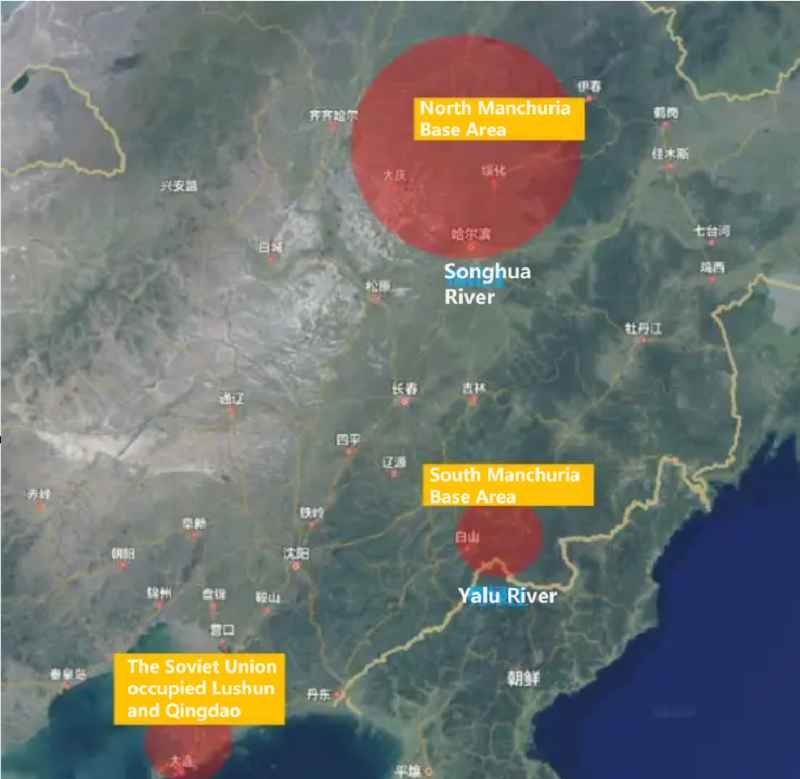
At this time, the PLA’s only bases in the Northeast were the areas north of the Songhua River and South Manchuria, which made South Manchuria the key to influencing the next situation in the Northeast: as long as the South Manchuria base could hold on, the Kuomintang would have to divide its forces to take care of both the north and the south, and would be unable to concentrate its forces to form a breakthrough. Lin Biao (commander of the PLA’s Northeast Field Army) would have the opportunity to gain a foothold north of the Songhua River; once the South Manchuria base was lost, the Kuomintang could have no worries and concentrate its forces to continue attacking north of the Songhua River, which would be really troublesome.
Behind the South Manchuria base is the Yalu River. The North Korean government, separated by the river, provided the PLA with various kinds of help at this critical moment:
1. Providing a rear base: During the entire Liberation War, North Korea received more than 15,000 PLA wounded soldiers and settled more than 180,000 logistics personnel and their families; 2. Supplying materials and equipment: From June to December 1947 alone, more than 210,000 tons of materials were supplied, including a large amount of Japanese military supplies; 3. Helping with transportation: Helping the PLA transport troops and military supplies;
In short, when the war in Northeast China was at its most critical, North Korea provided a safe rear area for the South Manchurian troops, not only providing a valuable base for the wounded soldiers and their families to rest and recuperate, but also providing a large amount of material supplies to the People’s Liberation Army in South Manchuria, making a significant contribution to the final victory of the Northeast Liberation War.
However, North Korea was completely under the control of the Soviet Union at that time, and North Korea’s assistance actually came from the national policy formulated by the Soviet Union for it; and the reason why North Korea could become a safe rear area was mainly because the Kuomintang was afraid of the Soviet army in North Korea. So strictly speaking, most of the credit should go to the Soviet Union.
However, in any case, it was the Korean people who actually helped the PLA. "A drop of water should be repaid with a spring." North Korea helped us in times of trouble. Now that our lives are getting better, North Korea asks for help, so of course we must do our best to help. Therefore, Chairman Mao agreed to Kim Il-sung’s request without hesitation.
Chairman Mao told Jin Yi that the 164th and 166th Divisions stationed in the Northeast could be handed over to the North Korean government immediately; the 156th Division would follow the Fourth Field Army to fight the final battle in southern China and would be handed over after the war.
Not only that, Chairman Mao generously told Jin Yi that not only the troops could be taken away, but all the weapons and equipment could also be taken away. If ammunition was needed, China could now make ammunition by itself, and we would supply it for you.
North Korea suddenly discovered that helping China was probably the most "cost-effective" investment in history.
In the first half of 1949, Kim Il-sung was probably one of the luckiest people in the world: North Korea, which was almost penniless, suddenly had a large number of advanced Soviet weapons and tens of thousands of battle-hardened Chinese People’s Liberation Army. Wow, it was incredible.
3. Kim Il-sung’s ambition
In June 1949, the United States withdrew its troops from South Korea.
On July 20, 1949, under the order of Chairman Mao, the 164th and 166th Divisions of the Fourth Field Army of the Chinese People’s Liberation Army entered North Korea with full equipment and personnel, and a total of 21,141 people were incorporated into the Korean People’s Army.
With the addition of this new force, and the fact that Kim Il-sung kept recruiting troops at home after the Soviet army left, North Korea now has a fairly decent army. Now, Kim Il-sung began to become ambitious.
Kim Il-sung is no longer thinking about self-protection. Facing South Korea, which is no longer protected by the US military, it is Kim Il-sung’s turn to become the "King of Korea".
However, Kim Il-sung did not forget who the real boss was. If he wanted to attack, he had to obtain the consent of the big brother, the Soviet Union.
Stalin’s reply was: Forget it.
As mentioned before, Stalin focused his main energy on Europe. His overall requirement for Asia was to keep things from going wrong and maintain the status quo. It was with this in mind that the Soviet army withdrew from North Korea. Now, of course, he did not want Kim Il-sung to cause trouble for him.
The depressed Kim Il-sung found Chairman Mao again, hoping that the chairman who had just established the new China would agree with his idea of unifying the Korean Peninsula and help him persuade Stalin.
However, Chairman Mao was facing China’s own big problem at this time: the People’s Republic of China had just been announced, and the southwest region had not been liberated, not to mention the issue of liberating Taiwan Island. If Kim Il-sung angered the United States in North Korea at this time, the already difficult liberation of Taiwan would likely be in trouble.
So, Chairman Mao sent a telegram directly to Stalin, saying: Kim Il-sung said he wanted to attack South Korea. I don’t think it’s a good idea. What do you think?
Stalin replied: You are right. I also think it’s a bad idea.
Well, Kim Il-sung’s problem has returned to the starting point.
The two big brothers in Asia voted against it. Kim Il-sung, the youngest brother who had just taken office, did not dare to act rashly. He had to train his troops at home and wait for an opportunity.
However, Stalin was not very concerned about Asia at this time. He had no intention of studying any problems in North Korea. The various crises in Europe alone were enough for him to deal with.
If nothing unexpected happened, it would be difficult for Kim Il-sung to wait for the Soviet Union’s Cold War policy to change.
Fortunately for Kim Il-sung, this was 1949. The unexpected soon happened.
During this year, despite the fact that the whole world was not optimistic about it, the Communist Party of China, relying on its own strength, completely defeated the Kuomintang group, which was fully supported by the United States, in a strategic decisive battle, fundamentally reversed China’s humiliating history that lasted for a hundred years, and established an independent sovereign state belonging to the Chinese people. This brought about earth-shaking changes in the political situation in the whole of Asia and even the whole world.
The establishment of the People’s Republic of China triggered a series of geopolitical changes in East Asia, among which the Korean Peninsula, which is closely adjacent to China, was the most affected.
Therefore, even Kim Il-sung himself probably did not expect that the war permit he had longed for would only take him a few months to wait.
Author’s comments
1. The details of Kim Il-sung’s ascension are very difficult to find, because there is basically no reliable information on the North Korean side. I checked three books and gave three different versions. Fortunately, the general process is similar, so everyone can make do with it.
2. Let me complain about the information from North Korea. To put it more politely, some North Korean comrades have no idea what they are talking about. Their imagination is extremely wild and they can boast like a rocket. I will give you an example and you will understand: Kim Il-sung once said in public that he personally commanded China’s liberation war from beginning to end, and he handed China over to Chairman Mao after he established the People’s Republic of China. How would you evaluate Kim Il-sung after hearing this?
3. You may wonder if it was Mekler’s high evaluation of Kim Il-sung that made Stalin take a fancy to Kim Il-sung and directly support him as the top leader. In fact, Mekler’s evaluation of Kim Il-sung was "he showed a kind of thinking ability and maturity in evaluating the current situation", "he was a strict and serious person who enjoyed respect and love among the soldiers". It sounds like that. If he were put in the People’s Liberation Army, he would probably be a regiment commander, or at most a division commander.
4. The real reason why Kim Il-sung was chosen was known only to Stalin. However, there are two points that are generally recognized:
First, Kim Il-sung showed a very obvious pro-Soviet tendency when he lived in the Soviet Union. Not only that, he also showed a resistance to the Chinese Communist Party. In his daily work, Kim Il-sung often only listened to the advice of Soviet advisers, but he was hypocritical and disobedient to his Chinese superiors;
Second, Kim Il-sung has little experience, no fame, no military achievements, and no influence. This is a common criterion for old imperialist powers to choose puppets: those without fame are better than those with fame, and those without foundation are stronger than those with foundation. The less powerful a puppet is, the more loyal he will be to the country that supported him to take power, because only in this way can the interests of the puppet and the backer be deeply bound.
5. In fact, the Soviet Union did not directly choose Kim Il-sung at the beginning, but first tried to support Cho Man-sik, who was quite prestigious in North Korea. As a result, Cho Man-sik strongly opposed the Soviet Union’s trusteeship as soon as he came to power, saying that he wanted to strive for independence for North Korea - he was indeed a tough guy, and he was unwilling to even pretend to obey the Soviet Union - and he was quickly killed by the Soviet Union. After that, the Soviet Union felt that it was still necessary to find someone with a shallow foundation and loyal, so Kim Il-sung was promoted.
6. In general, Kim Il-sung’s story is like the familiar Internet BAT bosses. If you want to talk about ability, they are indeed quite powerful. But they can become so big, not entirely by themselves, but because they happened to stand at the outlet of the Chinese Internet, which blew them up to the sky. Kim Il-sung was riding on a once-in-a-century 18-level typhoon. Before people could react, the crown was already on his head.


